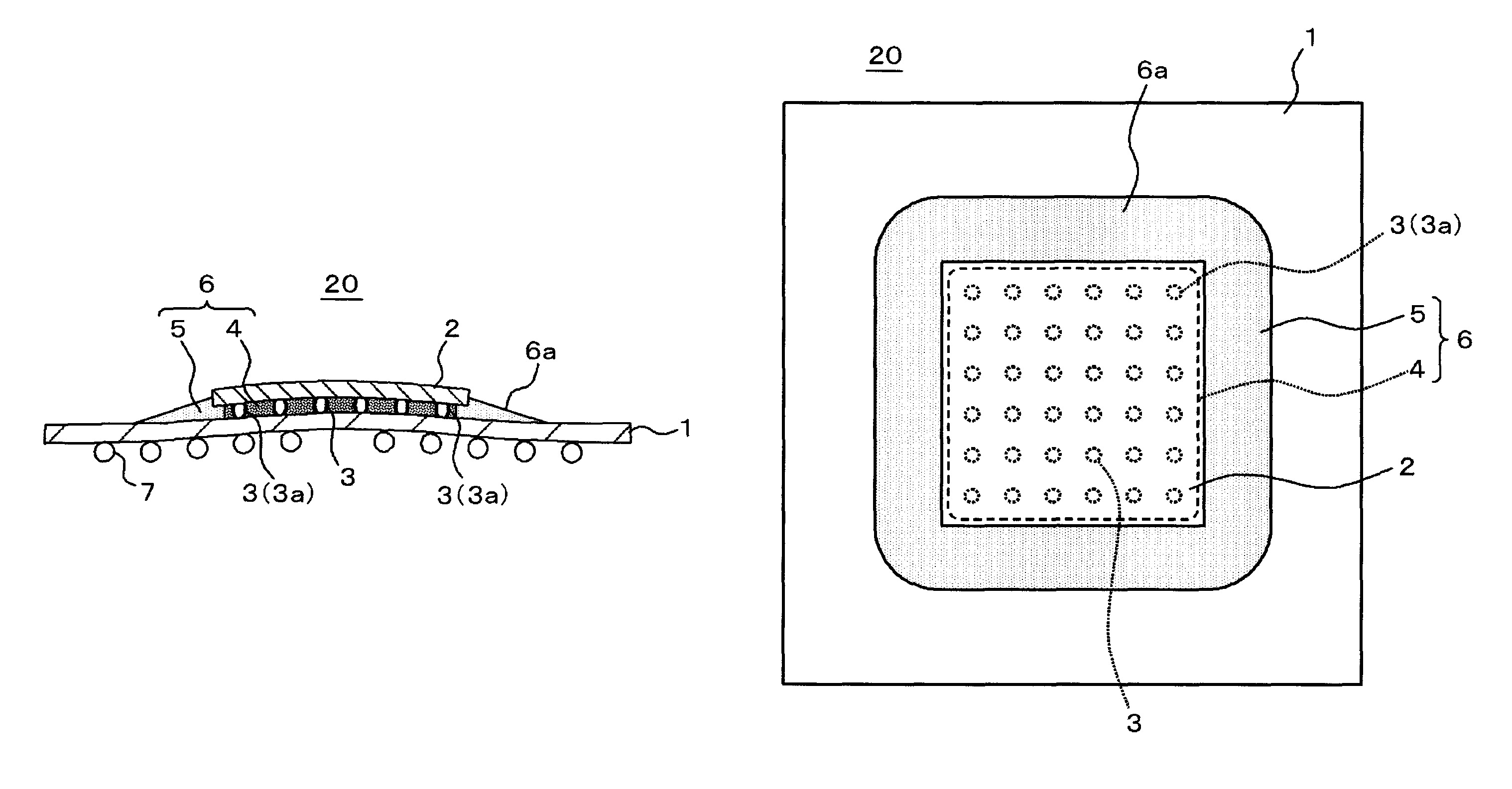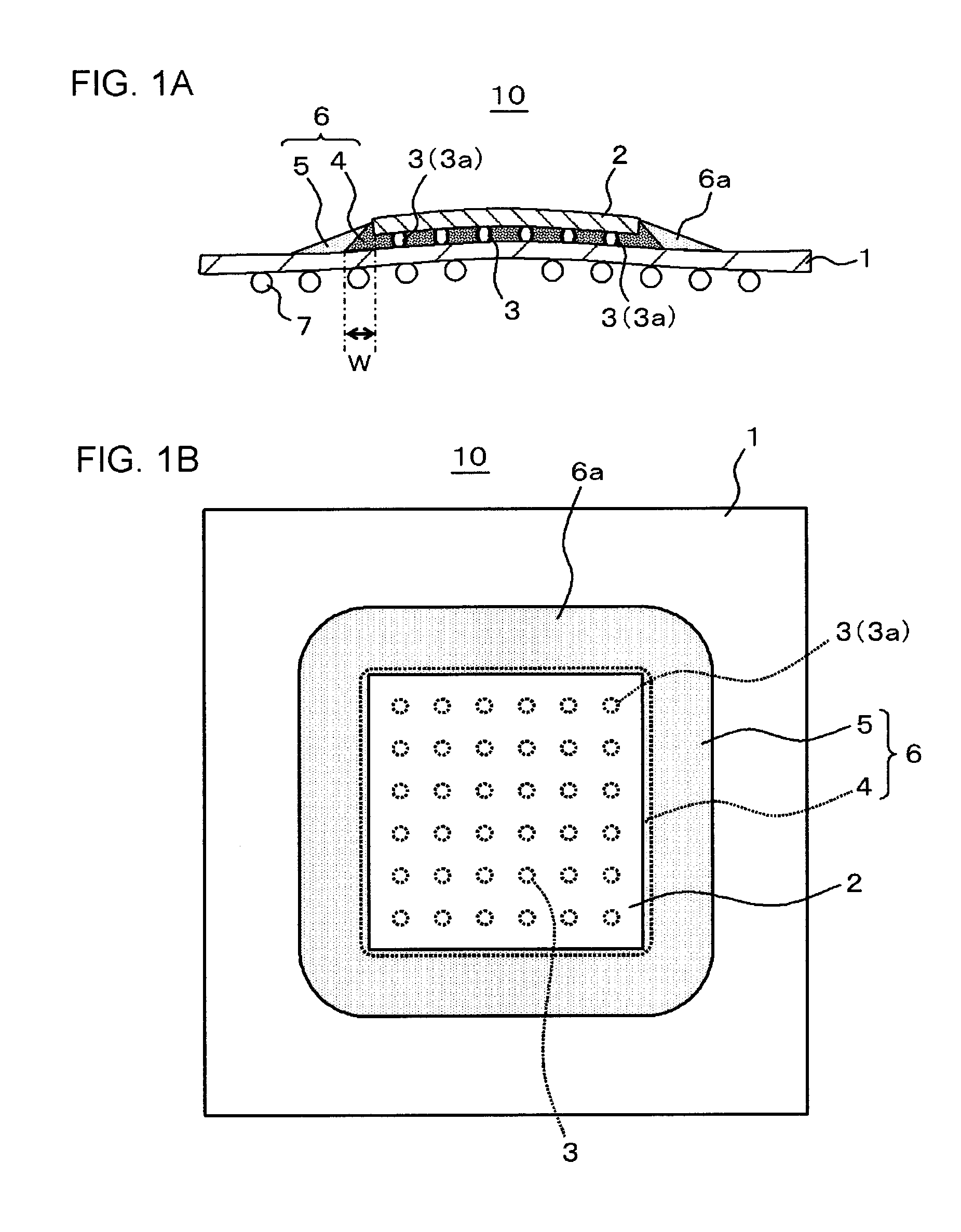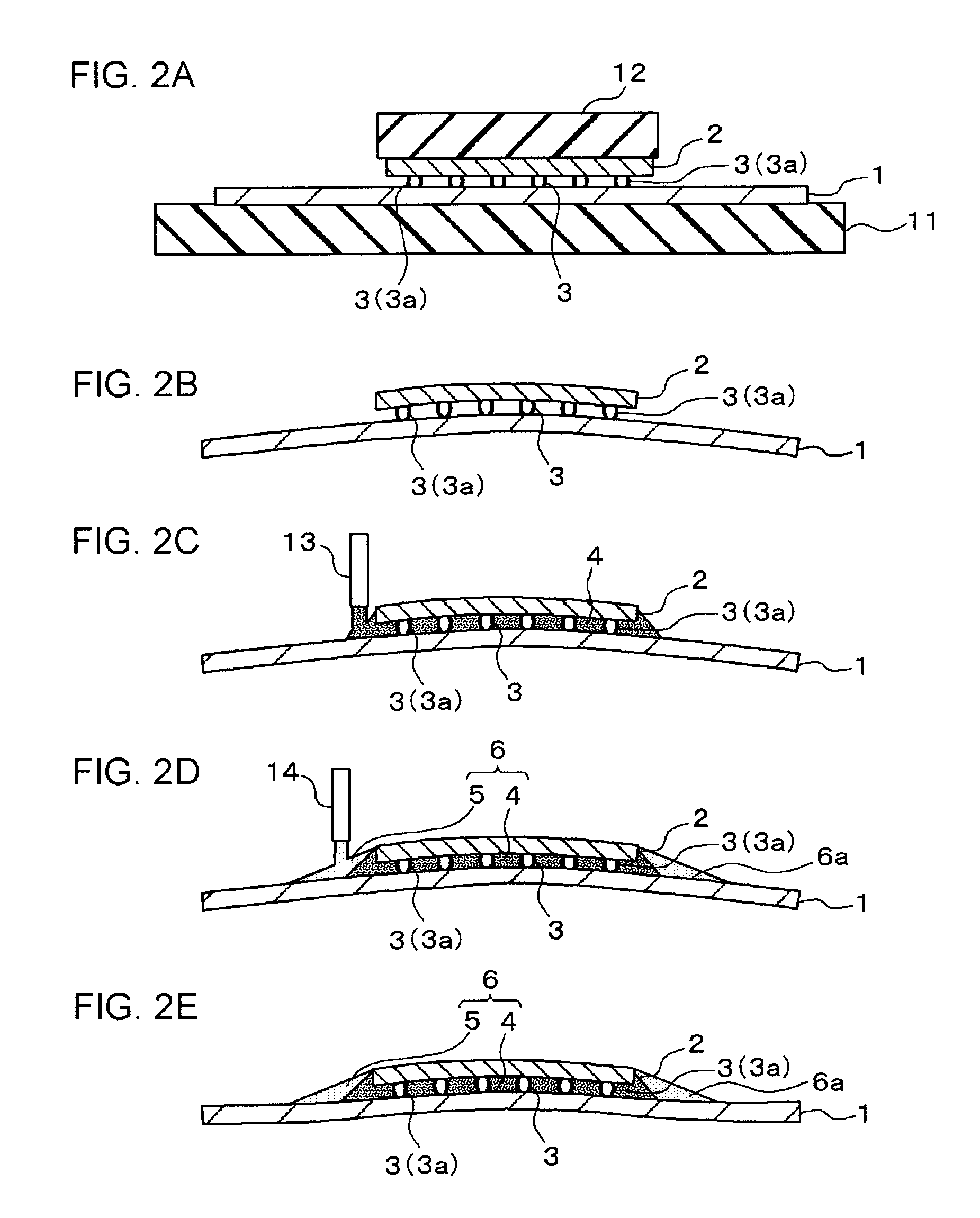Semiconductor device and method for manufacturing the same
a semiconductor and semiconductor technology, applied in the direction of semiconductor devices, semiconductor/solid-state device details, electrical equipment, etc., can solve the problems of poor reliability after mounting, the warpage of the substrate, so as to reduce the stress on the joining portions between the chip and the substrate, reduce the effect of warpag
- Summary
- Abstract
- Description
- Claims
- Application Information
AI Technical Summary
Benefits of technology
Problems solved by technology
Method used
Image
Examples
first embodiment
[First Embodiment]
[0052]FIGS. 1A and 1B are schematic views showing the structure of a semiconductor device 10 according to a first embodiment. FIG. 1A is a front cross-sectional view, and FIG. 1B is a plan view. FIGS. 2A through 2E are a series of process drawings (cross-sectional views) for explaining a method for manufacturing the semiconductor device according to the first embodiment.
[0053]The semiconductor device 10 according to this embodiment includes a substrate 1, a semiconductor chip 2 that is connected to one of the faces of the substrate 1 via bumps 3, and has a device formation face facing the one of the faces of the substrate 1, and a resin 6 that fills the space between the device formation face of the semiconductor chip 2 and the one of the faces of the substrate 1. The resin 6 includes a first resin 4 that is formed in the formation region of bumps 3a located on the outermost circumference of the bumps 3 and is also formed inside the formation region, and a second r...
second embodiment
[Second Embodiment]
[0097]FIGS. 3A and 3B are schematic views showing the structure of a semiconductor device 20 according to a second embodiment. FIG. 3A is a front cross-sectional view, and FIG. 3B is a plan view. FIGS. 4A through 4E are a series of process drawings (cross-sectional views) for explaining a method for manufacturing the semiconductor device according to the second embodiment.
[0098]A method for manufacturing the semiconductor device 20 according to this embodiment differs from the manufacturing method according to the first embodiment. In this embodiment, the first resin 4 is supplied (or placed) onto the substrate 1 prior to the flip-chip bonding, and after the flip-chip bonding, the second resin 5 is supplied. Accordingly, not only a liquid resin that is supposedly used in the first embodiment, but also a film-type resin may be used as the first resin 4.
[0099]Referring now to FIGS. 4A through 4E, the method for manufacturing the semiconductor device according to thi...
third embodiment
[Third Embodiment]
[0113]FIGS. 5A and 5B are schematic views showing a semiconductor device 30 according to a third embodiment. FIG. 5A is a front cross-sectional view, and FIG. 5B is a plan view.
[0114]As shown in FIGS. 5A and 5B, this embodiment differs from the first embodiment in the arrangement of the bumps 3. In the first and second embodiments, the bumps 3 are arranged in the so-called “area-arrangement” manner in the plane of the chip 2. In this embodiment, on the other hand, the bumps 3 are arranged along the peripheral portion of the chip 2 (arranged in a so-called “peripheral-arrangement” manner).
[0115]The other aspects of the semiconductor device 30 according to this embodiment are the same as those of the first or second embodiment, and the semiconductor device 30 achieves the same effects as those of the first or second embodiment.
PUM
 Login to View More
Login to View More Abstract
Description
Claims
Application Information
 Login to View More
Login to View More - R&D
- Intellectual Property
- Life Sciences
- Materials
- Tech Scout
- Unparalleled Data Quality
- Higher Quality Content
- 60% Fewer Hallucinations
Browse by: Latest US Patents, China's latest patents, Technical Efficacy Thesaurus, Application Domain, Technology Topic, Popular Technical Reports.
© 2025 PatSnap. All rights reserved.Legal|Privacy policy|Modern Slavery Act Transparency Statement|Sitemap|About US| Contact US: help@patsnap.com



